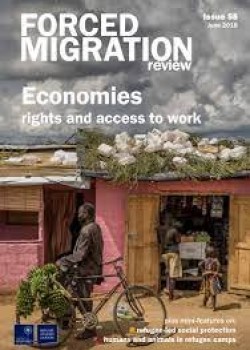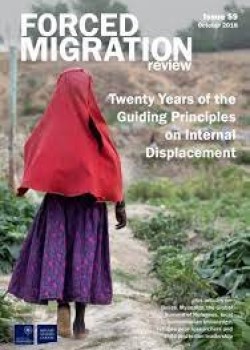Lanka Monthly Digest (LMD)
Adapting to Climate Change
Author : Roshini Alles and Amila Balasuriya
Publisher: Media Services (Pvt.) Ltd
Place of Publish: Sri Lanka, Colombo
Year: 2014
Page Numbers: 101
Series: 14-Dec
Acc. No: 382-J
Category: Journals
Subjects: Adult Education
Languages: English
This issue of the LMD magazine carries an article by CEPA titled “Adapting to Climate Change”. The recent UN climate summit in New York re-focused the world's attention on climate change. Definitely a global phenomenon, it is predicted to disproportionately impact low and middle income countries, and the poorest communities within them. This situation challenges developing countries to adopt pathways to development that achieve a sustainable balance between human and environmental well-being. In Sri Lanka, too, efforts are being made to establish more sustainable practices to address climate change. Climate-conscious development requires integration of environmental safeguards into development policy, programmes and practices. This entails building ‘adaptive capacity,' which is the ability of a nation to offset the effects of climate change. While the uncertainties and technical aspects of Earth sciences increase, the difficulty to build adaptive capacity with the buy-in of stakeholders to take action further, heightens the complexity of this task. A study conducted by the Centre for Poverty Analysis, on adapting to climate change in coastal areas of Sri Lanka, identified stakeholders at national, sectoral and civil society levels; and ground, community and practice levels. At the policy level, climate change is given national importance, with the Ministry of Environment framing conditions for sustainable development and institutional greening - establishing the National Council for Sustainable Development and its Action Plan (Haritha Lanka), it formulated the National Climate Change Policy (2012) and the Adaptation Strategy (2011-2016), in addition to a mitigation strategy. However, since adoption of the policy and strategies is not mandatory, the ministry can only lobby for implementation by other state actors. Adaptation at every level needs to be supported through funding, knowledge technology, capacity and experimentation, to come up with specific problem-solvers that will deliver options for the future. Building adaptive capacity requires time. It is a gradual process that has to work down through the levels of policymakers, and across the stakeholders, to get individuals on board and build resilience to climate change impacts through trial, error and research, according to the specific climate threats and context. Understanding the interactions among the many stakeholders should be a key part of the process of building adaptive capacity.



